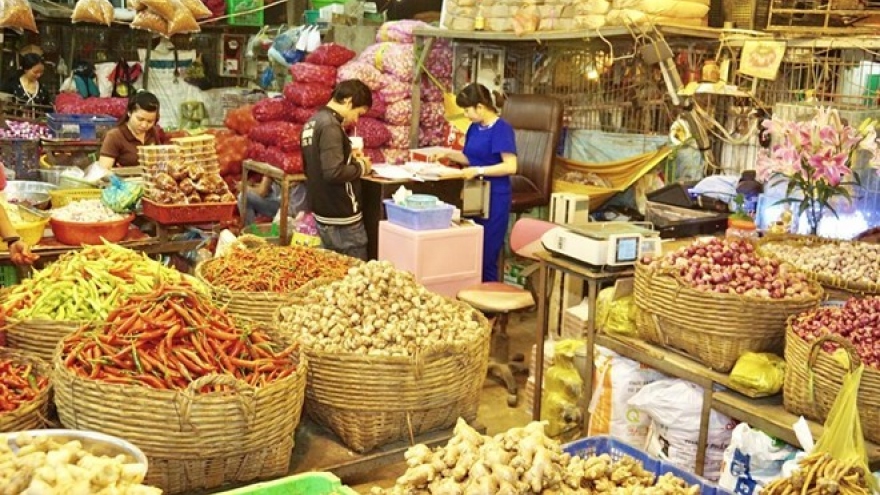China remains crucial as Vietnam expands fruit exports
Vietnam’s fruits and vegetables are successfully penetrating high-regulation markets, but biggest buyer China should remain the focus, experts say.
 |
|
A farmer harvesting mango in southern An Giang Province, Vietnam. Photo by VnExpress
|
It took almost a decade to get import approval for mango, which has become Vietnam’s sixth fruit to be shipped to the U.S. after dragon fruit, rambutan, longan, lychee and star apple.
"The first batch has been well received by consumers, so we are preparing more," local media quoted Ngo Tuong Vy, deputy director of Chanh Thu Fruit Import and Export JSC, the exporter of the mangoes, as saying.
Deputy Minister of Agriculture and Rural Development Le Quoc Doanh said: "The successful export of mangoes to the U.S. can be seen as a step forward for Vietnam’s agricultural sector and a testament to the quality of Vietnamese fruits in being accepted in one of the most difficult markets in the world."
Last October, Vietnam had succeeded in getting approval for exporting rambutan to New Zealand. Rambutan is became the third fruit exported to this market, after mango and dragon fruit.
Latest statistics from the International Trade Centre show that Vietnam was also the second largest supplier of fruit and edible drupes to Australia in the first six months of 2018.
With an export value of $58 million, Vietnam accounted for 16.8 percent of Australia’s total imports of such products.
The entry into difficult markets has been reflected in the sharp rise in Vietnam’s fruit and vegetable exports, from just $800 million in 2012 to $3.8 billion in 2018.
It is remarkable that fruit and vegetable exports have even exceeded that of rice ($3.06 billion), while requiring only 40 percent of the land required for the grain.
Given this explosive growth, the Ministry of Agriculture and Rural Development (MARD) has set what is widely considered an ambitious export target of $10 billion by 2025.
China most important, still
Dr Bui Chi Buu, a former director of the Southern Institute of Science and Technology, said the fact that local businesses have been able to coordinate clean and safe production processes to export to "difficult" markets such as the U.S. is a good sign for Vietnam.
But it should still focus on fruit exports to China, its biggest market, he said. China accounted for $2.58 billion, or 73.3 percent of Vietnam’s total fruit and vegetable exports, in 2018.
China has a population of 1.3 billion and very high consumer demand, but it has lost 5 million hectares of farmlands to industrial development in the last few years, he explained.
It thus seeks to source more food from neighbouring countries such as Myanmar, Thailand and Vietnam, he said.
Experts have also pointed out that exporting fresh fruit is much more expensive to markets further away.
"Fresh fruits can only be exported by air, and logistics account for a big chunk of their price," said Nguyen Quoc Toan, head of the Ministry of Agriculture and Rural Development’s agricultural product processing and market development department.
"The price of Vietnamese mangoes for U.S. consumers range from $10-14.2 per kilogram, three times as much as (those from) competitors like Mexico and Guatemala," said Ngo Tuong Vy.
Another head of a fruit export company based in northern Vietnam also commented, "For each kilogram of fruit worth $1, my company pays $2-3 in freight."
However, China has recently been raising its quality requirements for fruits and vegetables from Vietnam. From January 1 this year, agricultural products must have their origins (region, producer, etc.) declared to Chinese customs.
From May 1 this year fruits will not be allowed in if wrapped in hay or other materials that may contain harmful microorganisms.
These and other new requirements have caused fruit and vegetable exports to China to decrease by 6.3 percent year-on-year in the first quarter of 2019 to $680 million, throwing in doubt the $10 billion export goal.
"The Chinese government is under pressure from its own people to raise standards," Buu said.
In the past Vietnam’s fruit trade with China was not clearly regulated or structured, so exporting entailed some risks because most of the produce were exported via unofficial channels with unstable consumption markets.
"Now China also wants to put things in order, demanding verification of origins for products. This is a good opportunity for Vietnam to reorganize and do proper business with China," he added.



